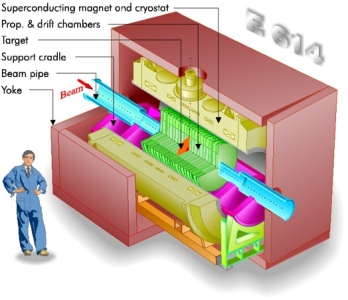TWIST
The TRIUMF Weak
Interaction Symmetry Test
A collaboration of RRC "Kurchatov Institute" (Russia), Texas
A&M, TRIUMF, University of Alberta, University of British
Columbia, University of Montreal, University of Regina, Valparaiso
University
To contact our spokesperson, email Glen Marshall (glen dot marshall at triumf dot ca).

Searching for Nature's Right Hand
Elementary particles such as electrons are labeled as either
"right-handed" or "left-handed". A surprising observation is that
only left-handed particles seem to feel the weak nuclear force,
whereas left- and right-handed particles feel the other fundamental
forces equally. This difference, called parity violation,
was predicted and observed in the 1950's, and led to a Nobel Prize.
It is now a cornerstone of the modern Standard Model of subatomic
physics. However, there are strong reasons to believe that this
Standard Model is incomplete. "Left-right symmetric" theories explain
parity violation by assuming that right-handed particles also respond
to the weak force, but we would need to be in a much hotter world -
with a temperature well above 10^15 degrees - for this to be
obvious.
The TWIST Collaboration is testing these theories with high-precision
measurements of the decay of the muon, a particle that appears
identical to an electron in all regards except that it is heavier.
The Collaboration has just reported
the first improvement since 1966 in the measurement of the energy
spectrum of positrons produced in muon decay. This new result agrees
with theoretical predictions in which right-handed particles do not
feel weak forces. Thus, it is less likely that left-right symmetric
theories are the correct explanation for the parity violation of the
weak force.
You are visitor number
 since 1 April, 2001.
since 1 April, 2001.
This page is maintained by Rob MacDonald (rmacdon@phys.ualberta.ca).
 since 1 April, 2001.
since 1 April, 2001.